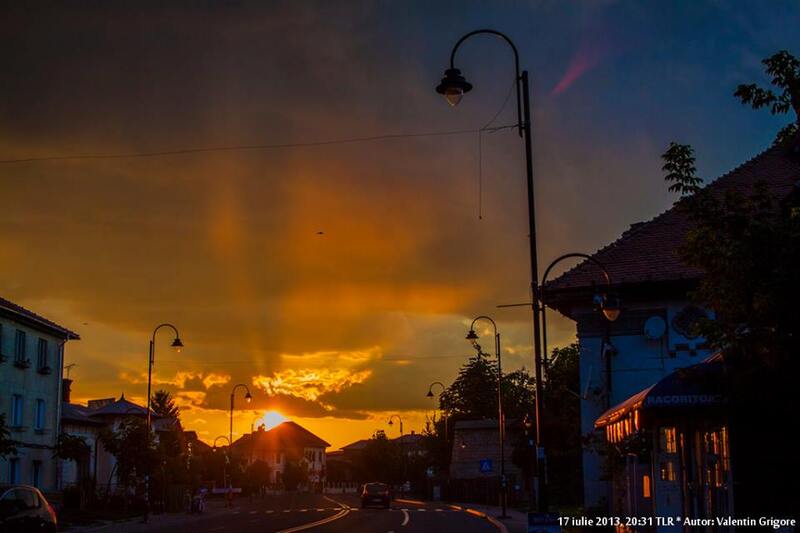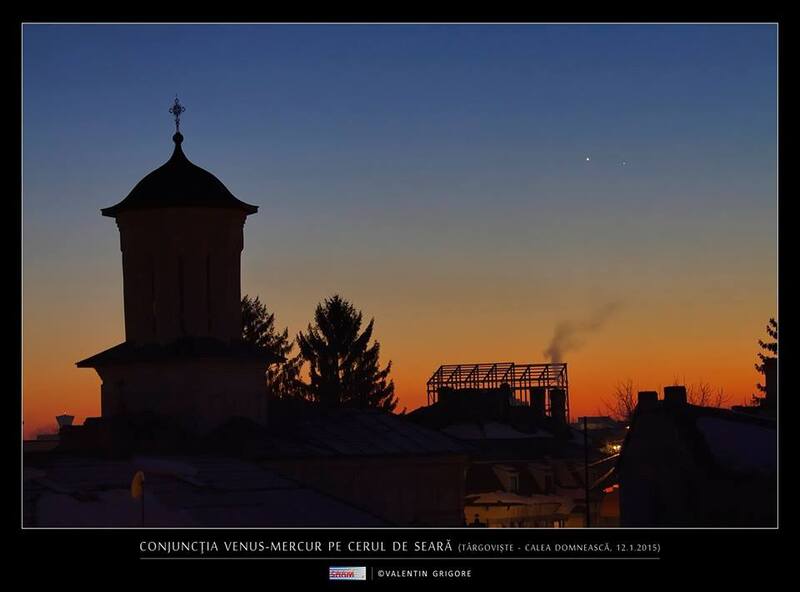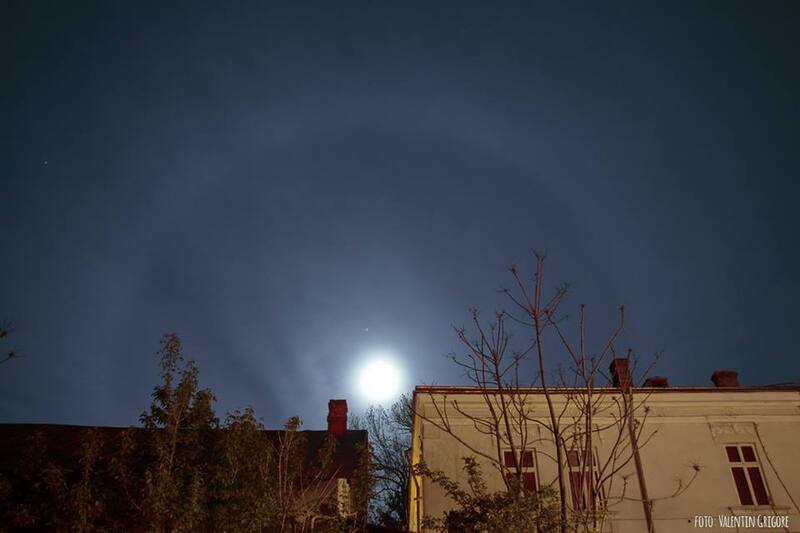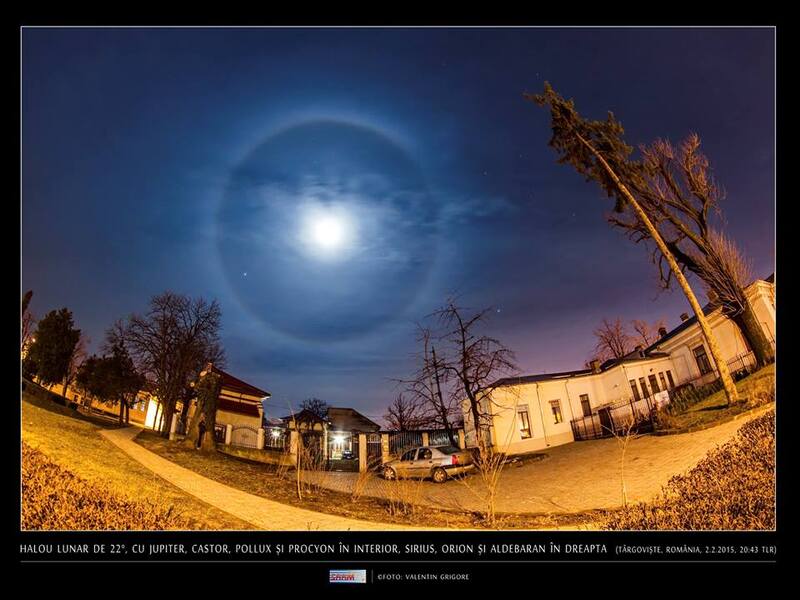A FEW ASTRAL ILLUMINATIONS
OVER THE CAMP ROAD
-text and photos Andrei Dorian Gheorghe
special guest astropgotographer Valentin Grigore
design Florin Alexandru Stancu
(Note: The photos for this project were made in between 2013 and 2019)-
“I have remained suspended over this large pit:
life.”
-from “Mathesis” by Constantin Noica (1909-1987,
illustrious Romanian philosopher
and prisoner of consciousness under the communist regime,
who lived for 11 years in the Camp Road quarter)-
Somewhere beyond the eastern edge of classical Bucharest,
from the Razoare Church
(which I caught under a tangent arc in 2016-01-18),
the Camp Road begins.
In fact, this is a boulevard marked by
the memory of the triumphant march of
Tudor Vladimirescu’s army of “pandurs”
from the Oltenia province to Bucharest in 1821,
after which he became, for two months,
the first Romanian ruler of Wallachia after 107 years.
Tudor Vladimirescu had fought before in a Russian-Ottoman war
as an officer in the army of the Orthodox Christians
(being decorated for his bravery),
then he assumed a social-national movement in his native Wallachia,
animated by two main principles:
a personal one,
“I have dressed the shirt of death”,
and a general one,
“the motherland is the people, not the gang of plunderers.”
It was after more than one century in which the Romanian countries,
Moldavia and Wallachia,
lost from their autonomy,
being led by rulers from Phanar (a Greek district in Istanbul),
chosen by the Ottoman Sultan.
This situation brought more cultural-economic benefits,
but the largest category of the people suffered because of the excessive fiscality
and the authoritative attitude of some of the new rulers,
so that they perceived the Phanariotes’ era as a supplementary foreign domination.
At the same time,
the organization for the liberation of Greece and the Balkans
from the Ottoman occupation,
Filiki Eteria (Society of Friends,
founded in 1814 at Odessa in Russia by exiled Greeks),
moved to Moldavia, from where its soldiers advanced to Wallachia in 1821
to join Tudor Vladimirescu’s army,
and then to cross together the Danube River
and to attack the Ottoman Empire.
Unfortunately, the Western powers did not sustain this action,
and more, even the Russian Tsar abandoned it,
so that, in these new conditions,
the meeting between Tudor Vladimirescu
and Prince Alexandros Ypsilantis (the leader of Eteria)
in Bucharest was not productive,
the first one preferring to remain in Wallachia
and to consolidate his fragile achievements:
Romanian rulers,
more rights for his people,
more autonomy for his country.
For this,
Tudor was considered a betrayer by the leaders of Filiki Eteria,
who abducted him and killed him
near the Monarchical Way (“Calea Domneasca”) in Targoviste.
After this tragic event,
most of the “pandurs” of Tudor returned home,
preferring to fight with the Ottomans in forests as small groups of “hajduks”,
so the Orthodox Christian alliance remained only partial
(Greek Eterists, a group of Romanian “pandurs” led by Captain Ioan Oarca,
Albanian, Bulgarian and Serbian volunteers
and mercenaries named “arnauts”),
being destroyed by the Ottoman contra-attack in Wallachia.
Fortunately, the Greeks continued their fight in Peloponnese,
in the Aegean Sea, in the Ionian Sea and in zones of continental Greece,
and, this time with international support,
obtained the independence of their country in 1828.
As a conclusion,
Tudor Vladimirescu was a victim of those contradictory times,
but he brought for Romanians the end of the Phanariots’ era
(that meant also an indirect victory against the Ottoman Empire),
and ideals of independence and social justice.
He also remained a hero of folk songs
(“A brave Romanian man like you,
Until he falls, until he dies,
Crushes the snakes under his feet.”
-from “The Dream of Tudor Vladimirescu”,
collected by Vasile Alecsandri).
I recently tried with Valentin Grigore to homage him
through an astro-photo-poem (cosmopoem)
in which the first two pictures (a statue of this hero in Bucharest
and the Tudor Vladimirescu College in his native town, Targu Jiu)
and the verses were made by me,
while the last four astro-photos were made by the president of SARM
on the Monarchical Way in Targoviste
(in the zone where Tudor Vladimirescu lived his last moments
before his assassination),
named just:
THE NATIONAL “PANDUR”
Tudor Vladimirescu,
A Romanian nationalist song:
Freedom in motion,
Astral emotion.




Returning to the Camp Road,
after 1870 the Romanian army opened a few bases around it,
and after 1960 the communist regime made here a large quarter
of blocks of flats for about 300,000 people
(more than a few Europeans Capitals)
in an atheist manner,
with only a cinema hall,
a small park (recently renovated) including a pool,
and no church!
Thus, I can say that the Razoare Chuch,
made in the interwar times
with admirable decorative art
including various astral representations,
heroically resisted during the hard communist era
at the border between old Bucharest and the Camp Road quarter.
In the last years I visited the Camp Road quarter for a few times,
trying to imagine the atmosphere from the time of Tudor Vladimirescu,
and wanting to see how the people implemented
spiritual architecture and cosmic breath
in the linear atheistic architecture of the zone
after the 1989 Anticommunist Revolution
(Romania being today,
in spite of over 40 years of communist-atheistic regime,
the country with the biggest number of churches in the European Union).
And…
I lived a veritable lesson of renascence!
Thus, going further of the Camp Road,
I found a small wooden church,
made in the north-Romanian style of Maramures
and named after Holy Stefan the Great
(a champion in defeating Orthodox Christianity,
ruler of Moldova in between 1457 and 1504).
This church has an original story,
being built with the decisive help of a former rugby player,
who received the blessing of the priest to make a poly-sportive club here
for the good health of the zonal children and teens.
And the results were incredible:
the feminine junior teams of this club
became national vice-champion at beach volleyball
and national bronze medalist at rugby sevens!
A few hundred meters further
I found out a Roman-Catholic church dedicated to Saint Mary
(although the believers of this confession are a minority in Romania).
I also made a larger tour of the quarter,
starting from its oldest building,
a water tower which served the Romanian army in the first part of the 20th century,
and stopping in the central park of the zone
(that, turning off the lights for 60 minutes,
participated at a world ecologic-astronomic event, “Earth Hour”, in 2012).
The new architectural jewel of the Camp Road quarter,
placed right near the park,
seems to be another Orthodox church, dedicated to Saint Paraskeva,
which is mainly a small reproduction of Hagia Sofia,
the “supreme” model of Byzantine architecture,
made by Emperor Justinian in the 6th century in Constantinople.
In November 2014,
when I visited the Saint Paraskeva Church for the first time,
the appearance of the Moon made me remember that in the 16th century
the Ottomans conquered Constantinople shortly after a lunar eclipse.
Then they changed the name of the city into Istanbul,
making from it the new Capital of their Empire,
and transformed Hagia Sofia into a mosque for almost four centuries,
building four minarets around it.
But in the 1930s, after the collapse of the Ottoman Empire,
the founder and first president of modern Turkey,
Mustafa Kemal Ataturk,
showing a remarkable politeness to Christianity,
re-transformed Hagia Sofia, this time into a museum.
And, in the Camp Road quarter,
I admired the Moon shining free.
Then, for a short time,
the Moon shared the sky with an airplane,
which made me remember that also here, around the Camp Road,
a Romanian pioneer of world aviation,
Aurel Vlaicu (1882-1913),
built and trained his airplanes through which he obtained
four prizes 2 and one prize 1
(defeating the most famous airman of the world, Roland Garros,
and over 40 other pilots from the great empires:
Austro-Hungarian, German, French, Russian, Belgian, Italian and Ottoman)
at the International Flight Week held by Aspen (near Vienna) in June 2012.
His favorite literary text was even…
the flight toward the Moon of Cyrano de Bergerac!
And I poetically smiled:
Aviation,
as well as faith, hope, love and astronomy,
is just a form
of the complex flight
of human being.
For the final of this project I chose the evening of 2015-05-09,
when I returned to the Razoare Church
and I caught Jupiter (up on the left) and Venus (down on the rught)
over the material symbol of the spiritual resistance of a Bucharestian quarter
against a former totalitarian regime.
*
© 2019 SARM
(Romanian Society for Meteors and Astronomy)